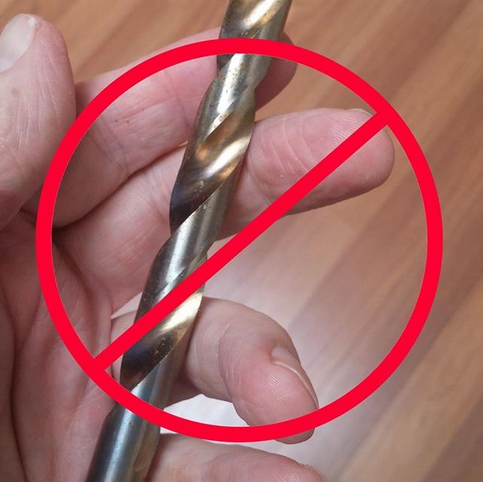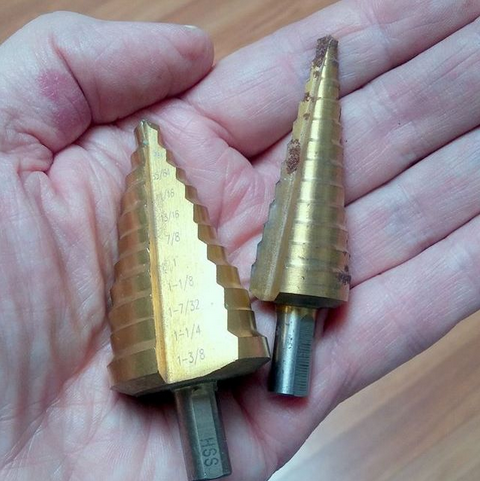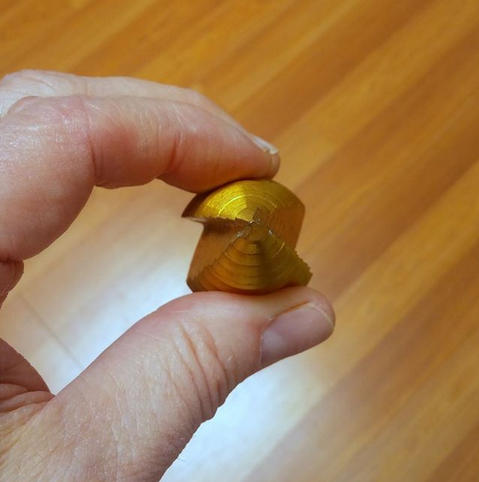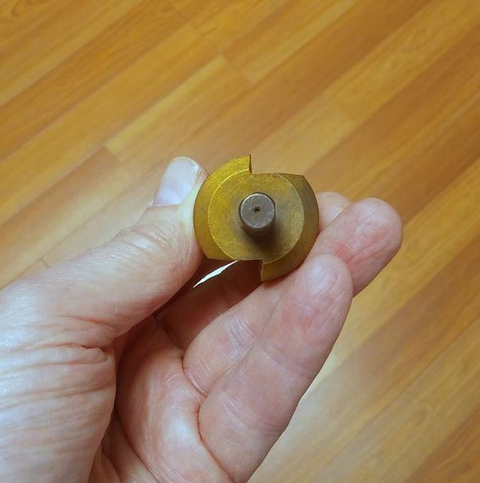What’s the best way to drill holes in real estate panels?

Q: We have a lot of panels that were originally intended to be used with metal stick-in-the-ground “H” style real estate sign frames. We’re converting to using the new wood textured PVC posts you supply, but now we have to drill holes in the panels in order to hang them. The problem is that when we drill holes in the panels, the drill makes very jagged holes that look terrible. They’re pretty dangerous too– we’ve cut ourselves more than once. Do you have any recommendations?
A: What you are talking about is a very common problem. For markets that are advancing from the old metal H-frame signs, selecting a new post style (including height and color, if you are ordering your own brokerage-specific custom PVC real estate signs) is only part of the proposition. Converting panels for hanging from the new posts is the next major issue.
The good news is that this is pretty easy to convert panels and riders. The secret is to NOT use a regular drill bit, which is more correctly and technically called a “twist drill”. Twist drills are commonly used for drilling holes in metal, wood, and plastic– primary thicker (1/2″ of thicker) materials. They are not designed for drilling holes in thin materials, like real estate sign panels or riders. Using twist drills on thin material usually results in jagged, terrible holes– exactly what you are experiencing. They’re also dangerous to use on thin materials, as the drilling action tends to snag the bit in the material, frequently resulting in loss of control of the tool and/or material by the operator, particularly if the drill fully snags and is pulled through the material.
The answer is to use a specialized drill designed for thin materials. This drill is called a “step drill”, due to its unique design that incorporates multiple “steps”. Here is how to use a step drill:
-
Identify the hole location on the panel face with a fine tipped pen or marker.
-
Using a drill punch or other suitable tool, mark the location of the hole. this will leave a small dimple in the material that will serve to keep the drill from moving around the material when you start.
-
With the step drill, begin drilling. Use a drill press (if available) for the best results.
-
As the drill penetrates the thin material, it will gradually open the hole with incrementally with increasing diameters—each one corresponding to a step on the drill bit.
-
When the desired hole diameter is achieved, stop.




Here are some more tips for drilling holes in real estate panels:
-
Unlike twist drills where you need one drill for each size hole, a single step drill can drill as many different sized holes are there are steps. While we show two different sizes in the photos below, you only need one drill—the size that includes the holes sizes you will commonly be using. Usually this is the larger version of the step drill.
-
Use a light lubricant, like mineral or motor oil, when drilling. Add a small dot of oil on the dimple you created with the drill punch. This will make drilling easier, and dramatically extend the life of the drill.
-
Use a slow to medium speed when drilling. A very fast drill speed ‘polishes’ the hole (makes it overly smooth), generating heat (potentially damaging the face of the panel) and making drilling more difficult. After a few holes, you will get the feel for the best speed for your drill in the material that you are working with.
-
And of course—be sure to wear appropriate personal protective gear, and particularly gloves and eye protection!
Lastly, if your panel material is of any kind of plastic, grommets are recommended to reinforce the real estate sign panel holes. This will enable the panel to more easily resist wind damage where the holes can get “torn out”, as well as ordinarily wear-and-tear on the holes as the panel swings in the breeze and the carabiner holding the panel can wear through the holes to the edge of the panel.
Have a question? Contact live help at 443-938-9178, Opt 1.
Follow SignTraker on Twitter at @SignTrakerTech and Facebook @SignTraker
3,021 total views

